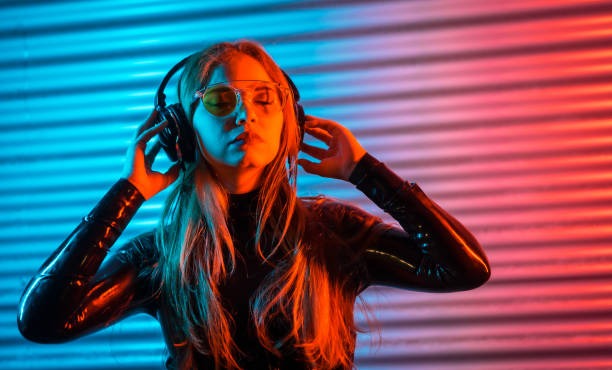Introduction
Techno music is more than just sound—it’s an experience. Its pulsating beats, hypnotic rhythms, and futuristic energy have given rise to a fashion culture that reflects the very essence of the music itself. In the world of techno, fashion is not just about clothing—it’s about self-expression, identity, and being part of a collective movement. Whether it’s underground raves or massive festivals, the synergy between fashion and techno has shaped a unique aesthetic that continues to evolve.
Today, one of the most exciting aspects of this fusion is how accessible it has become. Platforms dedicated to innovative ravewear, such as rave clothes, are making it easier for individuals to explore futuristic, functional, and expressive looks that embody the techno spirit.
The Roots of Techno Fashion
When techno first emerged in Detroit in the 1980s, its culture was shaped by industrial environments, underground clubs, and rebellious energy. Clothing mirrored this raw aesthetic: black leather jackets, PVC, harnesses, and utility gear became the unofficial uniform. The outfits were practical for long nights of dancing, but they also carried a sense of rebellion and futurism that aligned with the genre’s sound.
As techno spread to Europe, especially in Berlin, fashion expanded to include minimalist looks paired with functional garments. Black remained a dominant color, symbolizing anonymity and unity on the dancefloor. Over time, rave fashion grew into a creative outlet, evolving alongside the music and incorporating futuristic materials, bold accessories, and experimental designs.
Fashion as an Extension of the Beat
What makes techno fashion unique is how it mirrors the music itself. Repetitive beats, evolving layers, and industrial undertones translate into sleek silhouettes, layered textures, and metallic or reflective surfaces in clothing. A jacket lined with luminous trims can pulse with the strobe lights, while breathable mesh and technical fabrics allow freedom of movement for hours of dancing.
Fashion here isn’t static—it’s kinetic. It moves, reflects, and transforms with the music. In many ways, the outfit becomes part of the performance, blurring the line between audience and artist.
Rave Clothes: Function Meets Futurism
The modern rave scene has pushed fashion beyond aesthetics. Practicality matters as much as design. Breathable fabrics, water-resistant layers, modular pockets, and durable stitching ensure ravers can keep up with the music from dusk till dawn.
From reflective pants that glow under UV light to techwear-inspired jackets built with futuristic fabrics, these clothes are designed for both performance and endurance. They cater not only to the party atmosphere but also to everyday wear, showing how rave culture has influenced street fashion worldwide.
The Influence of Technology in Fashion
As techno music embraces innovation, so does the fashion that accompanies it. Designers are now incorporating technology directly into clothing:
- LED-infused fabrics that react to sound frequencies.
- Jackets with conductive fibers powering small lights.
- Wearables programmed to sync with beats during live performances.
These creations turn outfits into living artworks, elevating fashion to an interactive medium. What was once a passive element of the party has become a dynamic participant in the music itself.
Community and Identity Through Clothing
Rave fashion is not just about standing out—it’s about belonging. On the dancefloor, individual style blends into a collective visual symphony. A glowing jacket might reflect the lights and faces of those around you, creating a shared moment of unity. The choice of clothing communicates identity, whether it’s minimalist black attire symbolizing focus on music or flamboyant neon pieces celebrating freedom of expression.
This sense of community is central to techno culture. Clothing becomes a signal, an unspoken language that tells others: I’m here for the music, the connection, and the shared experience.
From Nightlife to Everyday Fashion
One fascinating aspect of techno fashion is how it has migrated from raves to everyday life. Pieces once exclusive to festivals now appear on city streets, office spaces, and social media feeds. A hoodie with reflective trims, cargo pants with modular pockets, or a structured harness can transition seamlessly from nightlife to daily wear.
This crossover demonstrates how rave aesthetics have shaped mainstream fashion. The futuristic edge of techno-inspired clothing resonates with a generation drawn to individuality, innovation, and utility.
The Future of Techno-Inspired Fashion
Looking ahead, the fusion of fashion and techno will only grow stronger. With advances in smart textiles, 3D printing, and interactive design, ravewear will continue to push boundaries. Imagine clothing that changes color with BPM variations, or fabrics that adjust temperature according to crowd density.
As the music evolves, so will the garments that accompany it. The next generation of rave fashion will not only respond to music but also to the environment, further merging human experience with technology.
Conclusion
Techno music and fashion share a deep, intertwined relationship. Both thrive on repetition, experimentation, and futurism. On the dancefloor, clothing becomes more than fabric—it’s an extension of the rhythm, a declaration of identity, and a tool for collective connection.
Ultimately, fashion in the techno scene is not just worn—it’s performed. It is a living, breathing part of the music. And as long as the beat continues to pulse, so will the evolution of rave fashion.



